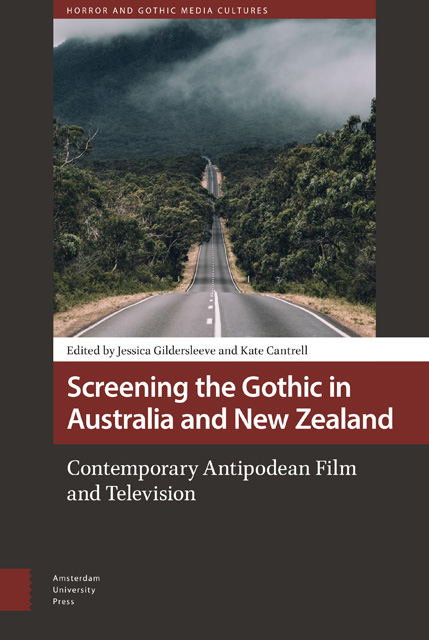1 - Unsettled Waters: The Postcolonial Gothic of Tidelands
Published online by Cambridge University Press: 24 November 2022
Summary
Abstract
Tidelands (2018), the first standalone Australian production in the Netflix Originals portfolio, imports the monstrous figure of the siren from Greek mythology to the South-East Queensland coast, unsettling not only the iconic Australian beach, but also the domestic television genres of the beachside soapie and crime drama. However, while Tidelands innovates in Australian Gothic, it also continues to engage with – or become entangled within – some of the genre's oldest preoccupations: nation, inheritance, belonging, and colonial guilt. Tidelands's spaces function as gothic heterotopias, reflecting tensions between multicultural, Indigenous, and Anglo-Celtic Australia which the series attempts to resolve by replacing First Nations peoples with the half-siren Tidelanders, imagining a future in which hybridity and assimilation erase the need for Reconciliation.
Keywords: Australian Gothic; heterotopia; Netflix; Queensland; beach; sirens
Tidelands (2018), the first standalone Australian production in the Netflix Originals portfolio, represents a new kind of Australian Gothic for an international border-crossing digital age. Filmed on Queensland's Sunshine Coast, the eight-episode series leaves behind Australian Gothic's traditional home in the outback and bush to focus on the everyday space of the beach. Importing the monstrous figure of the siren from Greek mythology to this new site unsettles not only the iconic Australian beach (as both setting and symbol) but also the popular domestic television genres of the beachside soapie and crime drama. However, even while this new gothic hybrid attempts to move beyond the genre's traditional trappings, the series continues to engage with – or becomes entangled within – some of Australian Gothic's oldest preoccupations: nationhood, inheritance, belonging, and colonial guilt.
Postcolonial gothic genres, such as the Australian Gothic, typically work to critique the mechanisms and aftereffects of colonization, and to reveal the unsavoury matter of the nation's colonial past. In doing so, the genre is able to effect a kind of restitution; according to Gina Wisker, postcolonial Gothic ‘reconfigures spaces and places, returning the value they had to the people who initially were the traditional owners of the land’ (108). However, Tidelands operates in a different mode, using gothic tropes and techniques not to acknowledge but to efface First Nations peoples’ experiences of violent dispossession and displacement.
- Type
- Chapter
- Information
- Screening the Gothic in Australia and New ZealandContemporary Antipodean Film and Television, pp. 21 - 44Publisher: Amsterdam University PressPrint publication year: 2022



